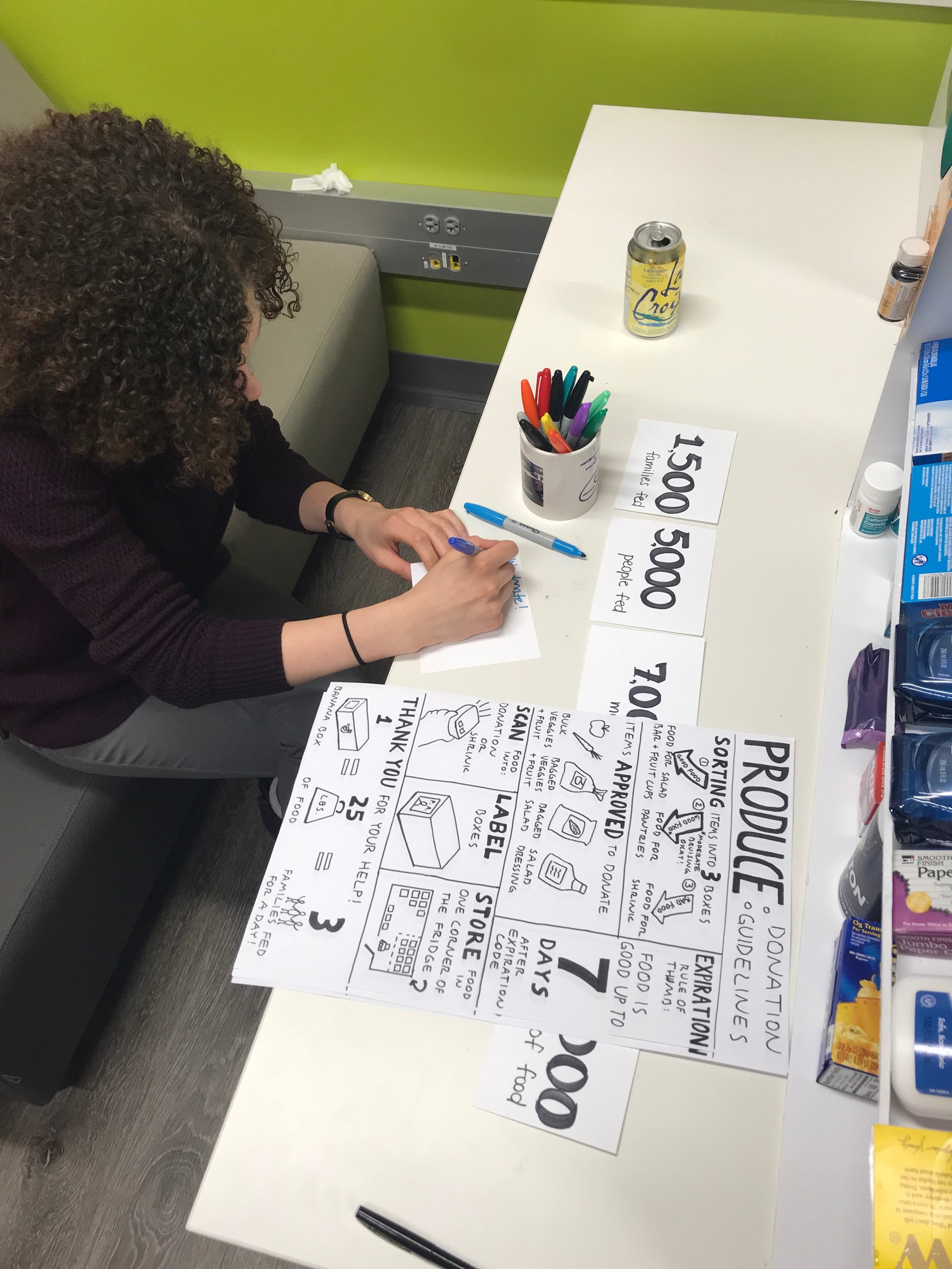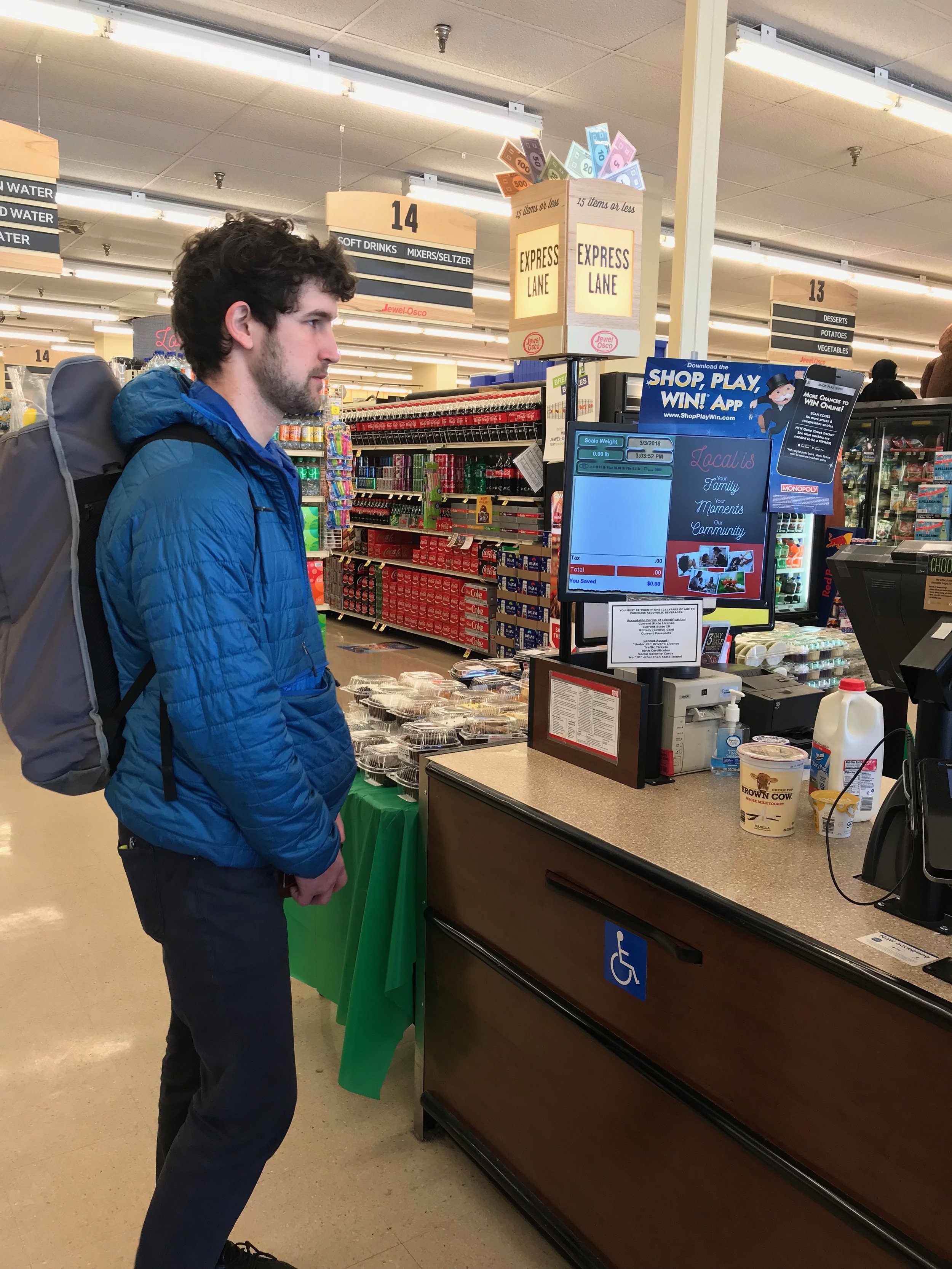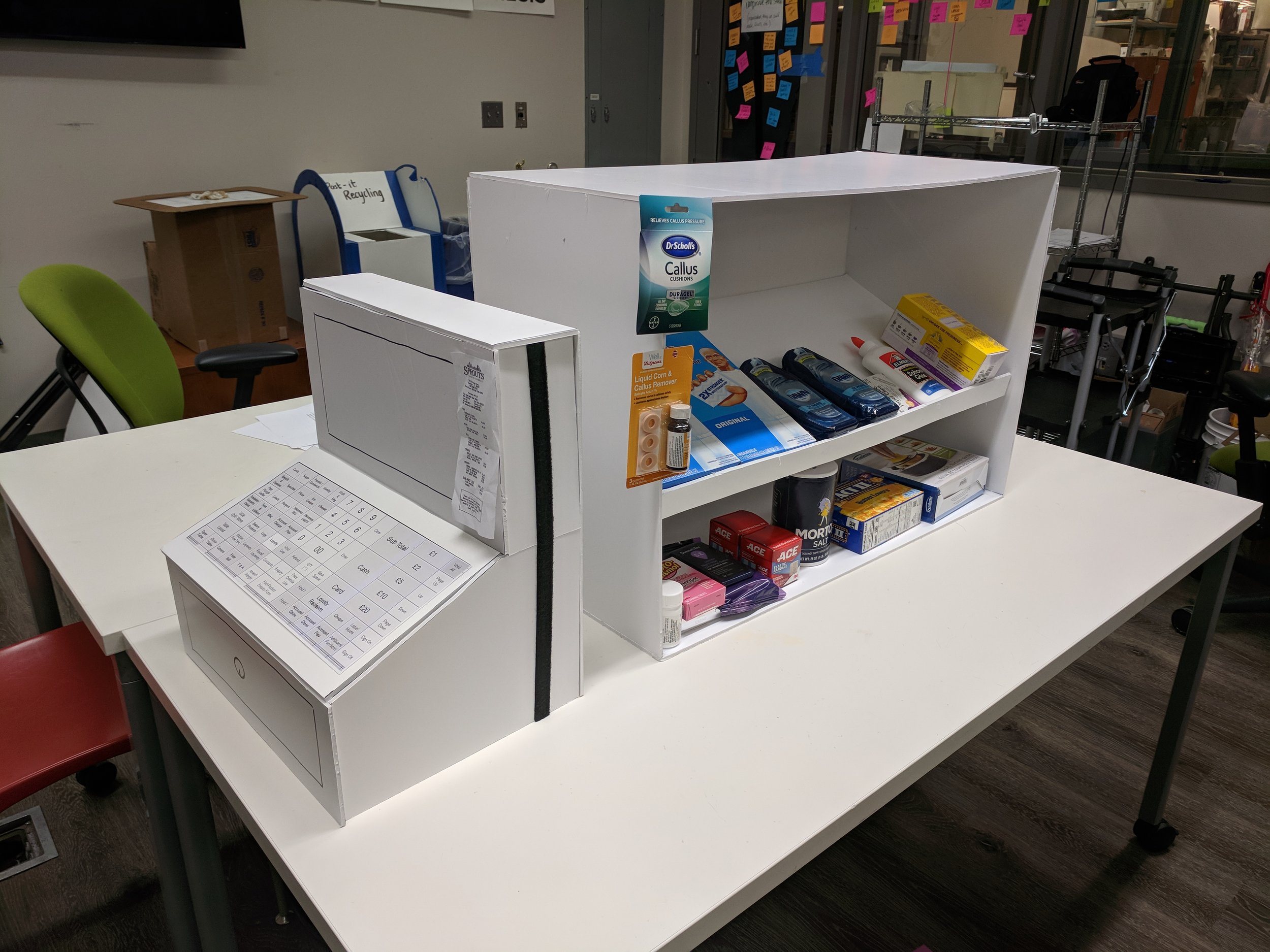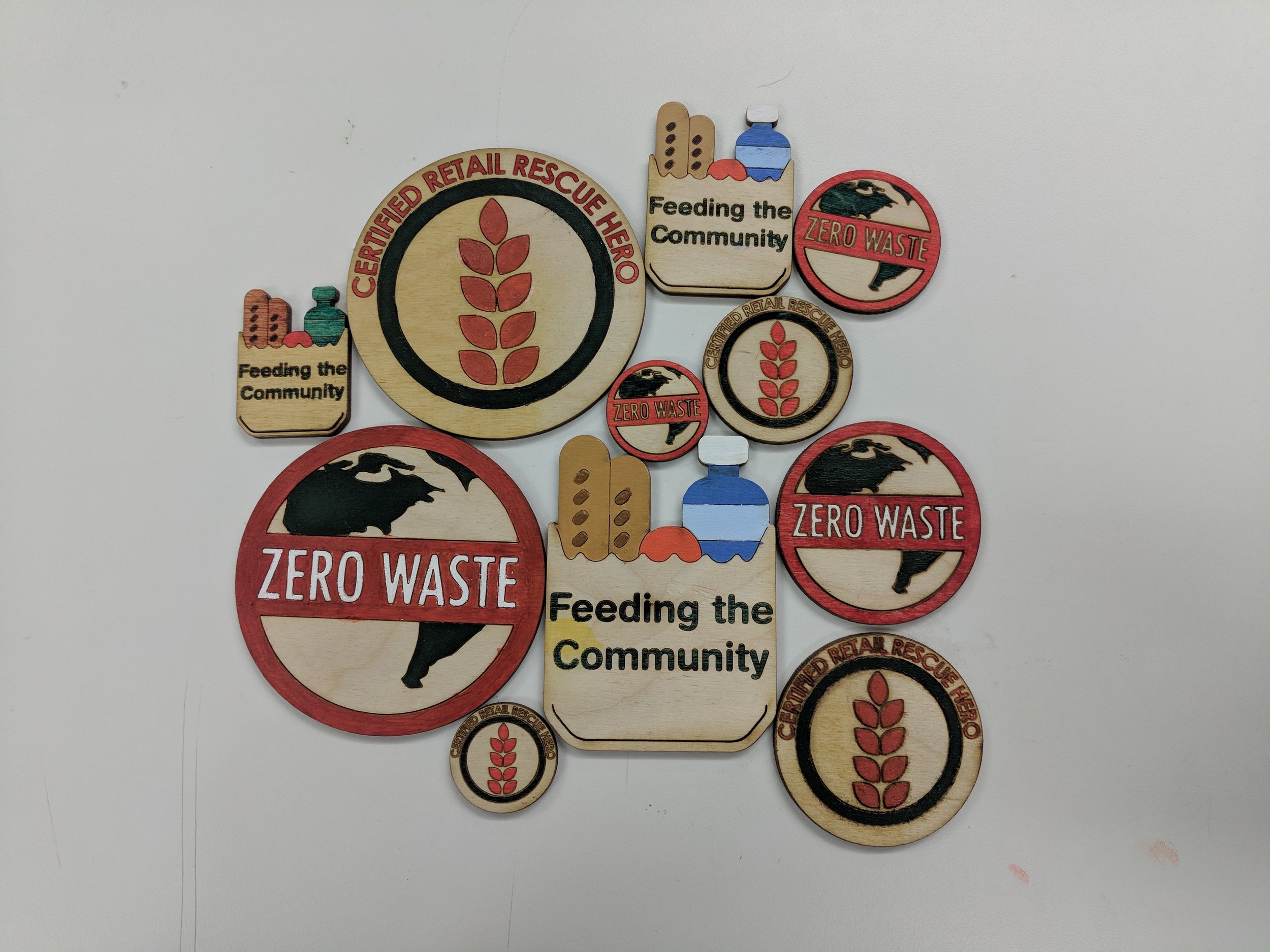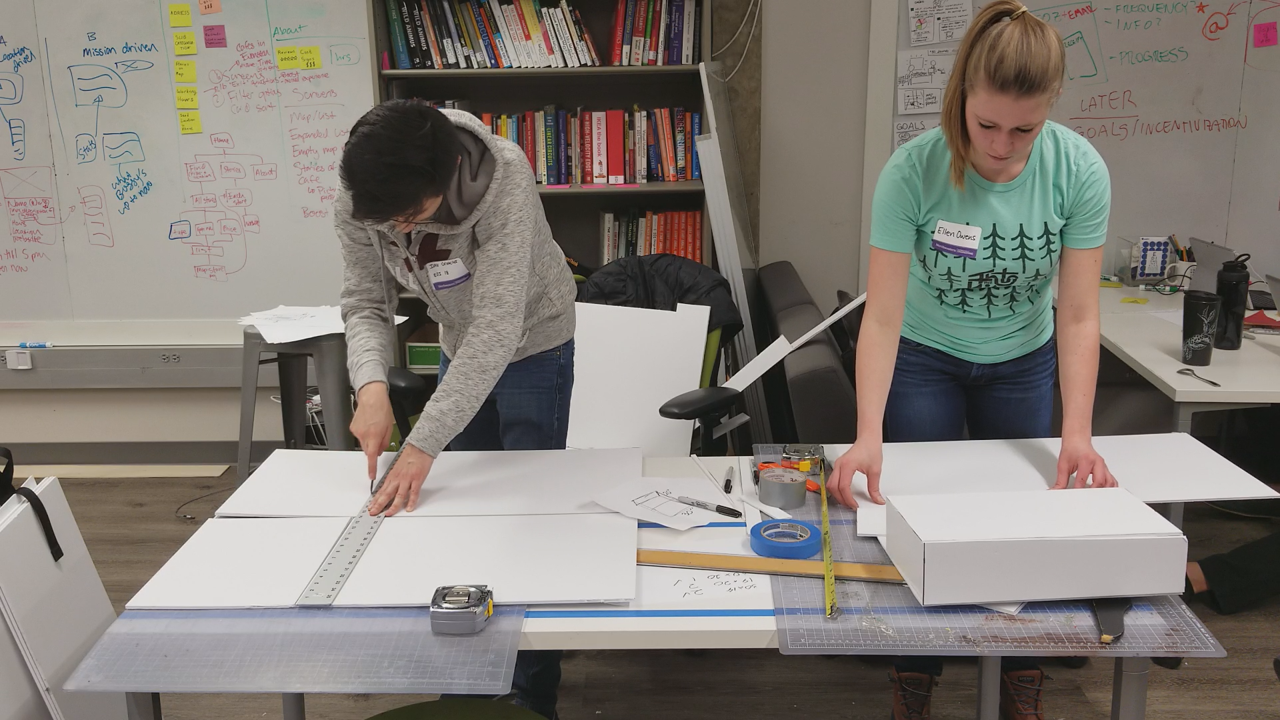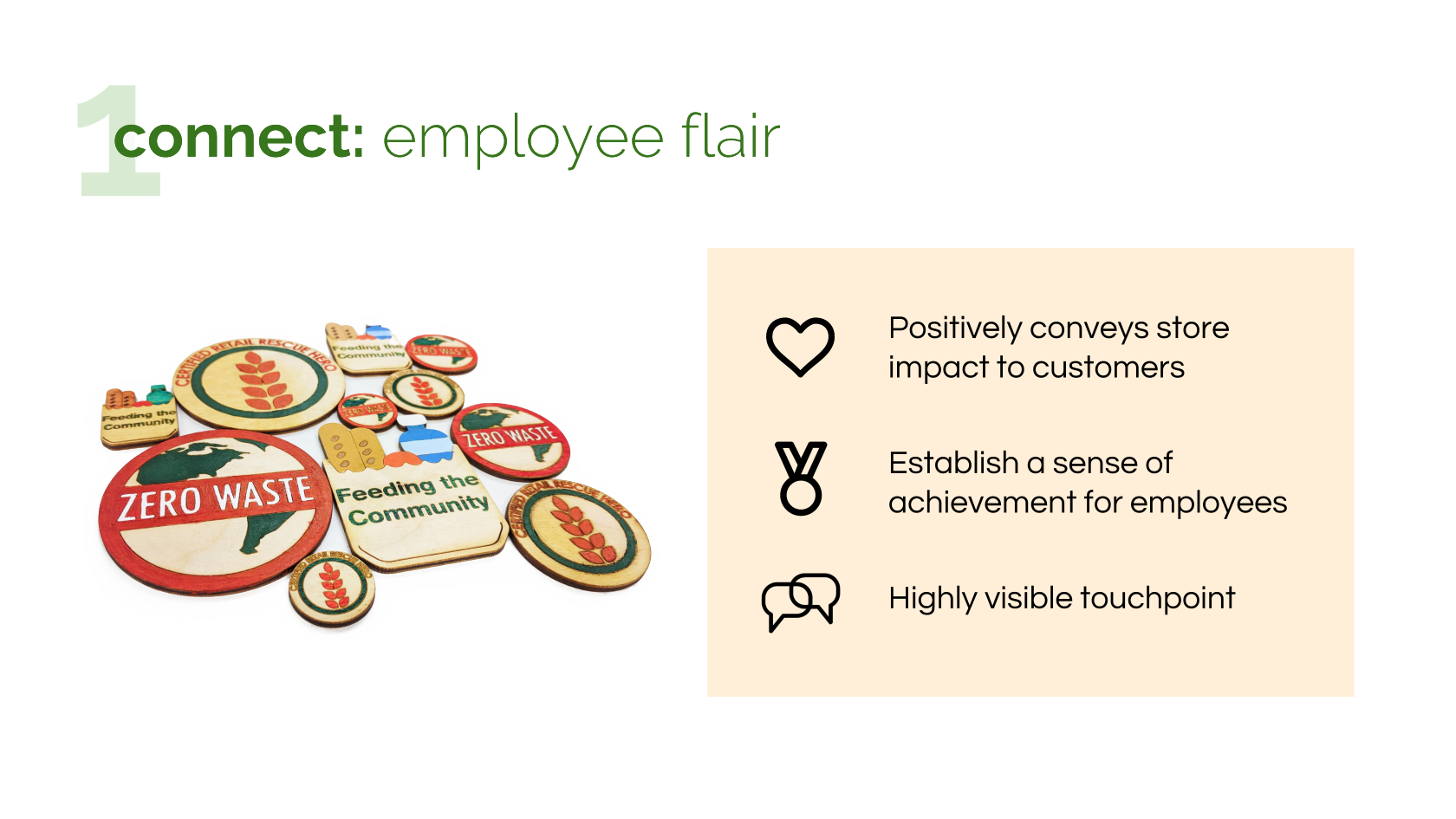Retail Rescue
How might we incentivize food donation at retail locations?
Organizations like Feeding America and the Greater Chicago Food Depository are responsible for motivating, transporting, and distributing retail rescue donations - unsaleable food, a.k.a “shrink”, at grocery stores that would otherwise be thrown away. Retail locations often do not donate as much as they are capable of despite the practice being little to no cost to them.
Over the course of 10 weeks, I would seek to design a service to increase retail rescue donation and get more food to our neighbors with food insecurity.
Role: Research Synthesis & Insights
On this project I was responsible for not only performing 20 hours of field work (e.g. shadowing at retail locations, making in-context observations, conducting expert interviews, and doing participatory research), but leading research synthesis and insight-finding sessions. I directed and participated in the construction of prototypes and drafted discussion guides for every level of iteration.
As the main person responsible for focusing the design efforts of the team on specific paths while at the same time keeping the larger picture in mind, I also lead the crafting of the narrative of presentations and our service demonstration video (bottom of page).
All it takes is a little Faith…
We chose to dive into the world of retail rescue by shadowing an expert in the field: Faith, an employee of the Greater Chicago Food Depository (GCFD). She was almost solely responsible for motivating retail locations to turn trash into donations by providing proper training and reminding managers, employees, and shop heads (e.g. head of the bakery) of the strong positive social impact their efforts were having. This inside view helped us understand the constellation of factors that complicate an employee’s decision to donate or trash unsaleable food and brought our attention to the person behind that decision.
Focus: Store Employee
The invisible and unrewarded individual that is responsible for all retail rescue donations when they first become a donation. Though they play the most direct and pivotal role in the decision whether to throw a food item out or donate it, many hurdles stand in their way.
“Corporate wants us to donate more but we don’t see or understand the benefit ... it just feels like extra work for us.”
“It’s not always clear what is OK to donate and I will usually throw it away in that case. I don’t want to donate anything that can potentially make someone sick.”
Managers do not experience any tangible benefits that incentivize them to maintain donation practices. Unmaintained donation practices leave employees without any connection to the practice.
Inadequate and inconsistent training prevents employees from having the knowledge to confidently make donations.
Employees have many tasks on their mind and do not have the motivation to prioritize donation. Being wholly disconnected from the positive emotional aspects of the practice, donation often takes a back seat.
Three Tiers of Service
Based on the insights we had derived from synthesizing our research, our focus was the store employee - the one who with an unsaleable (but still safe and tasty to eat!) can of food in their hand is making the decision whether or not to donate it. In that moment, we want that employee to be connected, informed, and motivated to turn that can into a donation.
A service blueprint helped us organize our ideas for how we aimed to make that happen. The three main thrusts were:
Connect: Reports from Feeding America to retail stores help employees feel the ‘warm fuzzies’ by knowing that their donations are making an impact and by how much. Worn flair is a highly visible touchpoint that puts the positive values of the store on display to customers and gives a sense of achievement.
Inform: Infographics and signage help employees make informed and confident decisions regarding food-safe donations. Reports with language tailored around high impact numbers instead of abstract ones (e.g. X families fed instead of Y pounds donated) help managers understand their performance in real-world terms.
Motivate: Instead of stores paying for a disposal company to dispose of their waste, stores would pay Feeding America to be their waste disposal provider. More donations and less waste means that Feeding America would incur less costs to dispose of the waste and pass that back to the store in the form of a check - a much more tangible incentive - as well as licensing B Corp-style branding so the store can represent their values publicly.
Failing Fast, Learning Quickly
We built a mock store, produced dozens of different mock-ups of flair and manager reports, and wrote frameworks for the B-Corp style disposal service. We tested our prototypes in front of our target users, grocery store employees, in simulated walk-throughs of our mock store, guerrilla visits to local retail locations, and in-context interviews.
“I value the ‘family’ metric most because it reminds me of a mother feeding her kids.”
“People can tangibly understand what a meal is. Pounds are harder because no one knows what a thousand pounds of food is.”
We quickly developed a nomenclature and set of high-impact metrics that had a strong emotional resonance with employees that saw them. Phrases like ‘families fed’ or ‘meals provided’ give employees a more intuitive sense of the day-to-day impact they are making with their donations. Flair with simplified nonquantitative phrasing elicited feelings of pride and accomplishment while managers’ reports with the same phrasing but including numbers allowed them to track their progress in a way that made them look forward to sharing with employees.
We presented our vision for the whole service through the eyes of the person at the center of our service, the store employee:
Solution: ‘Shrink Management’ Service
Service Demonstration Video
Seeing Through the Employee's Eyes: Feeding America's 'Shrink* Management' Service
Team Deliver(Y): Colin Brown, Ivan Calvachi, SueSan Chen, Ellen Owens, Gar Waterman. 2018.
*shrink is the term for unsaleable food that is sorted into trash or donations
















